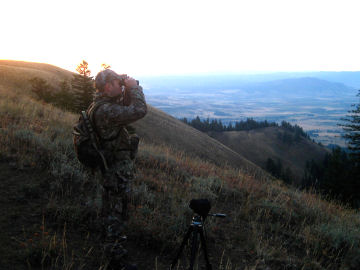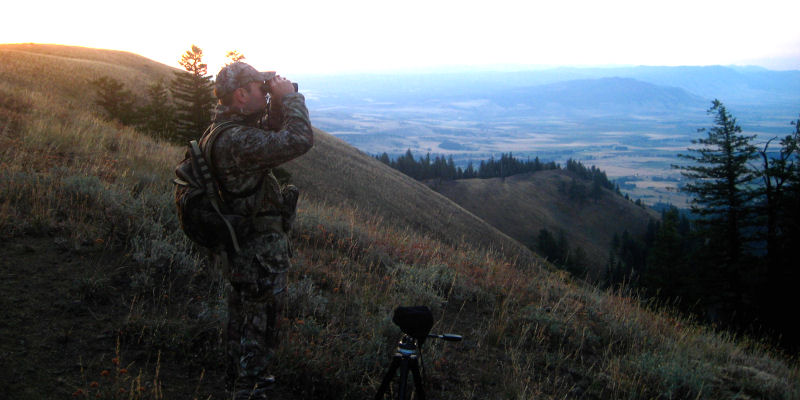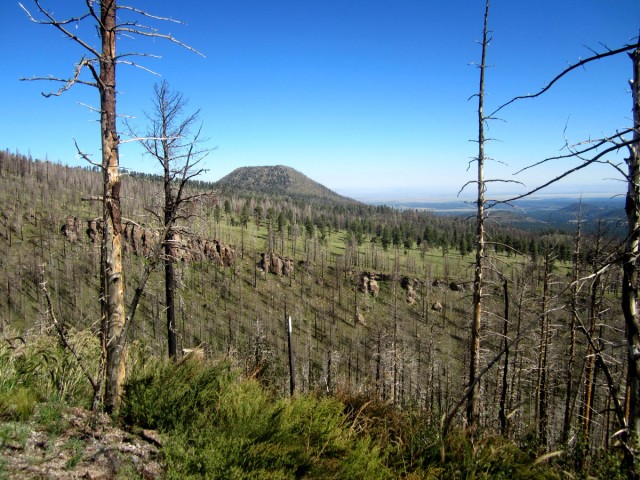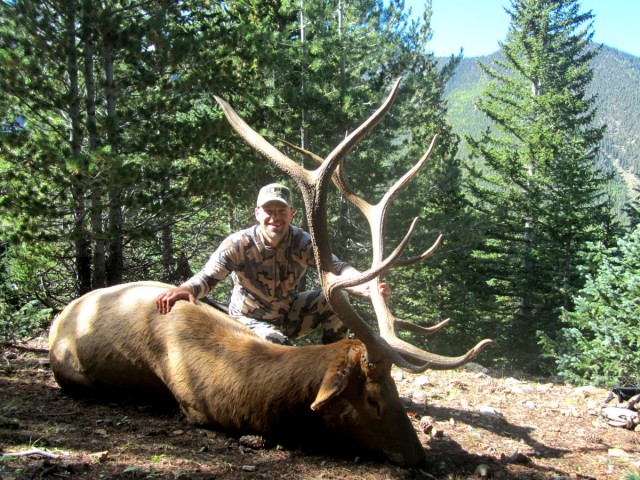Finding A New Elk Hunting Area


As elk hunters we often invest a lot of time, money, and effort into shooting our bows, getting in shape, studying elk behavior, and perfecting our elk-calling techniques. But, we often spend very little time finding good elk hunting areas. It’s not uncommon for many hunters to simply return to the same old haunts they’ve always hunted and continue to get the same poor results. I’m as guilty as anyone. However, I’ve learned a few things – the hard way – that have helped me find new, quality elk-hunting grounds and improve my chances at success.
Every year, I apply for elk tags across multiple states. I research the harvest statistics within each unit in each state. I also research the corresponding “draw odds” for each of those units. It varies by state, but I typically apply for the tags with the best harvest statistics that I can statistically draw within a 5-to-7 year time frame. I research over-the-counter (OTC) tags in the same way, and look for units with good harvest statics.
Of course, you can skip a lot of this stuff if you can find another experienced hunter to share his hunting spot with you. The only problem with this approach though, is that hunters keep their good spots secret. Nothing ruins a good hunting spot like more people. So what do you do?
I have always tried to find backcountry hunting areas far from roads and trails. This is where Google Earth becomes your friend and Youtube becomes your teacher. If you don’t know how to use Google Earth, look up a tutorial on Youtube. You can learn how to do almost anything from Youtube!
 Once I’ve identified my target units based on harvest statistics, I use Google Earth to find the most remote areas of the unit. But be careful – remote can mean a lot of different things. Years ago, I hiked several miles into a so-called “remote” area. I had high expectations for that hunt. We were miles from any roads and our pre-season scouting pictures from game cameras had us grinning from ear-to-ear. Little did we know throughout our planning, we were just 100 yards from a major backpacking trail. There were no roads into the area, but we overlooked the trail! Opening day brought an army of hunters into our “remote” hunting spot. Like I said before, “Nothing ruins a good hunting spot like more people.”
Once I’ve identified my target units based on harvest statistics, I use Google Earth to find the most remote areas of the unit. But be careful – remote can mean a lot of different things. Years ago, I hiked several miles into a so-called “remote” area. I had high expectations for that hunt. We were miles from any roads and our pre-season scouting pictures from game cameras had us grinning from ear-to-ear. Little did we know throughout our planning, we were just 100 yards from a major backpacking trail. There were no roads into the area, but we overlooked the trail! Opening day brought an army of hunters into our “remote” hunting spot. Like I said before, “Nothing ruins a good hunting spot like more people.”
When I use Google Earth to find remote areas, I’m looking for areas without trails. I’m looking for areas that are difficult to access. And this is where your telephone comes in handy. You can call local wildlife biologists and fish and wildlife officers to glean useful information about the areas you’re researching. In a world that relies heavily on texting and instant messaging, the telephone is often forgotten as a way of connecting with people. Conversation is the oldest form of communication. Call around. Ask some questions. Here are a few questions I would ask:
- How many outfitters hunt this area? (Nothing ruins a good hunting spot like more people.)
- Where are the largest concentrations of elk?
- Where are the most elk harvested?
- If you were hunting this unit, where would you hunt?
The next step in finding a new elk hunting area is to actually put boots on the ground and do some scouting. Due to budget and/or time constraints, it’s not always possible to physically scout an area before the season. However, the difference between successful elk hunters and unsuccessful elk hunters is often the amount of time spent physically scouting new elk hunting areas.
 Regardless of whether you physically scout your area in the preseason or not, I think it’s wise to take a few days to scout the unit in the early part of your hunt. A few years back, I was hunting an easy-draw unit in Arizona. I took a few extra days before the hunt to learn the entire unit. A few days later, I killed a great bull using the information from those early days of scouting.
Regardless of whether you physically scout your area in the preseason or not, I think it’s wise to take a few days to scout the unit in the early part of your hunt. A few years back, I was hunting an easy-draw unit in Arizona. I took a few extra days before the hunt to learn the entire unit. A few days later, I killed a great bull using the information from those early days of scouting.
Another effective tactic to use to scout during the hunt is to scout after dark. Elk are often quite vocal after dark and seem to be very willing to respond to bugles after the sun goes down. During the day, however, those same elk can be dead-silent. Scouting after dark has been a major factor in my ability to locate new elk hunting areas that had been previously overlooked.
Lastly, find more than one new elk hunting area. Elk move. Don’t waste your season hunting an area where the elk currently aren’t. Have a plan A, B, & C for when the elk pull a “Houdini” and disappear on you. Don’t be afraid to “cut bait” and move to a new area.
With a little research, grit – and a lot of physical exertion – you’ll be finding new, productive elk hunting grounds this season. Good luck on your hunts and Stay Gritty!

